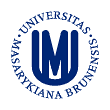



Karyotype is 69 XXY, 69 XXX or 69XYY
3 possible mechanisms:
The extra chromosomal set can either be of a paternal (dispermia, diandria) or maternal (digynia) origin. The development of both the fetus and the placenta is seriously affected. Basically the extra paternal chromosome set leads to an abnormal placental overgrowth — molar placenta (partial mola hydatidosa) the embryo becomes stunted and is aborted early in the first trimester.
In cases with extra maternal set of chromosomes the placenta is extremely small, nonmolar. The fetus with marked intrauterine growth retardation and congenital malformations is aborted late in second or third trimester.
Stillborn 33-week triploid (69 XXX) macerated fetus, markedly growth retarded,
weight 580 g (normal weight should be 1500 g), macrocephaly, low set ears, bulbous nose:
 Triploidy, face stigmatisation, Macro, autopsy (72449)
Triploidy, face stigmatisation, Macro, autopsy (72449)
 Triploidy, stigmata, Macro, autopsy (72451)
Triploidy, stigmata, Macro, autopsy (72451)
Upper limb, syndactyly of fingers 3 and 4 (the same case):
 Triploidy, Macro, autopsy (72450)
Triploidy, Macro, autopsy (72450)
Placenta is extremely small for gestational age, nonmolar (weight 58g, normal cca 300g):
 Triploidy, small placenta, Macro, autopsy (72452)
Triploidy, small placenta, Macro, autopsy (72452)
Another case of a triploid fetus with growth retardation, macrocephaly, micrognathia:
 Triploidy, Macro, autopsy (72984)
Triploidy, Macro, autopsy (72984)
 Triploidy, Macro, autopsy (72985)
Triploidy, Macro, autopsy (72985)
 Triploidy, Macro, autopsy (72986)
Triploidy, Macro, autopsy (72986)